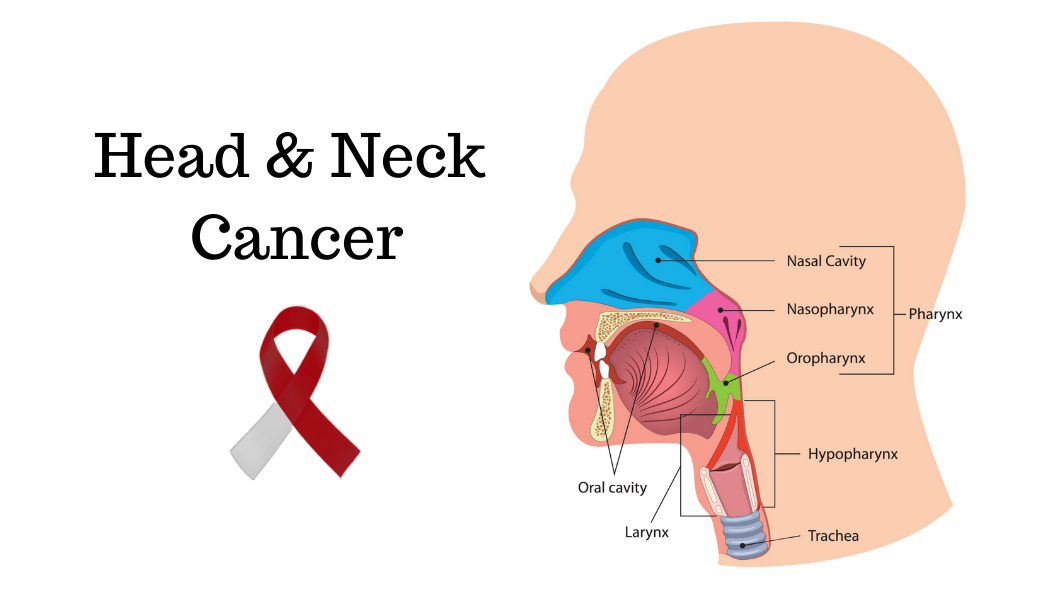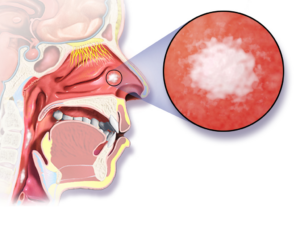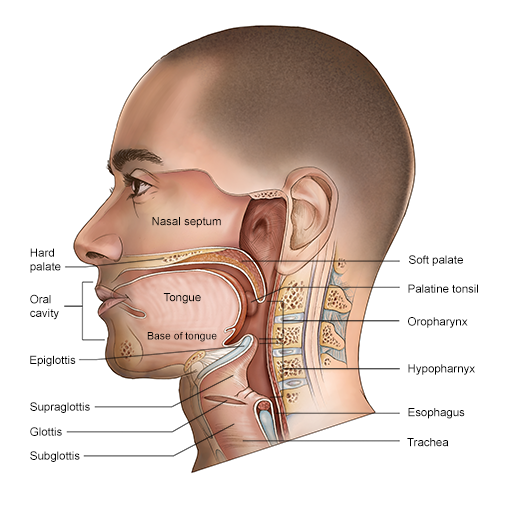Head and Neck Cancer
Head and Neck Cancer Treatment in Pune - Dr. Snita Sinukumar
An Overview:
Head and neck cancers include cancers of the mouth (oral cancers) and the throat, as well as rarer cancers of the nose, sinuses, salivary glands and middle ear. Dr. Snita Sinukumar gives the best Head and Neck Cancer Treatment in Pune.
MOUTH CANCERS (ORAL CANCERS):
The mouth is the most common place for head and neck cancer to develop. Mouth cancer can develop on the lip, the tongue, the floor of the mouth (under the tongue), the inside of the cheek, the roof of the mouth (the hard palate), the area behind the wisdom teeth or the gum. Dr. Snita Sinukumar gives the best Head and Neck Cancer Treatment in Pune.


LIP CANCER:
Most lip cancers occur on the bottom lip.
CANCER OF THE ORAL CAVITY (INSIDE THE MOUTH):
The most common places for cancer to develop inside the mouth are the side of the tongue and the floor of the mouth.
THROAT CANCERS:
Doctors use different names to describe different areas of the throat and the cancers that can develop there.
CANCER OF THE NASOPHARYNX:
The nasopharynx is the highest part of the throat behind the nose. Cancers that occur here are called nasopharyngeal cancers.
CANCER OF THE OROPHARYNX:
• The oropharynx is the part of the throat directly behind the mouth. It includes the soft part of the roof of the mouth (the soft palate), the base of the tongue (the part you can’t see), the tonsils and the back and side walls of the throat.
• The most common places in the oropharynx for cancer to develop are the tonsils and the base of the tongue. We have more information about cancer of the oropharynx.
CANCER OF THE VOICE BOX (LARYNX):
This is the second most common place for head and neck cancer to develop. We have more information about cancer of the voice box.
CANCER OF THE THYROID GLAND:
Cancer can also develop in the thyroid gland. It is treated differently from other types of head and neck cancer. We have more information about thyroid cancer.
Rarer Cancer of Head and Neck
CANCER OF THE SINUSES:
There are air spaces called sinuses in the bones of the face alongside the nose. Cancers can develop in the lining of these sinuses. Dr. Snita Sinukumar gives the best Head and Neck Cancer Treatment in Pune.
CANCER OF THE SALIVARY GLANDS:
Salivary glands make saliva, which keeps the mouth moist. There are three major pairs of salivary glands:
• Parotid glands – which are found on each side of the face, just in front of the ears
• Submandibular glands – which are under each side of the jawbone
• Sublingual glands – which are under the floor of the mouth and below either side of the tongue.
Salivary gland cancer is most likely to develop in the parotid glands.

CANCER OF THE MIDDLE EAR:
Rarely, cancer can develop in the middle ear. The middle ear is made up of the eardrum and a cavity called the tympanum, which contains three little bones (the malleus, incus, and stapes). These bones connect the eardrum to the inner ear. The tympanum is connected to the nasopharynx by a tube called the Eustachian tube.
Smoking cigarettes, cigars or pipes:
Smoking tobacco increases the risk of developing many types of head and neck cancer, including mouth cancers, throat cancers and cancer of the voice box. The more cigarettes someone smokes, and the more years they smoke for, the higher the risk.
Chewing tobacco or betel quid (paan):
Chewing tobacco or betel quid increases the risk of developing mouth cancer.
Alcohol:
Drinking alcohol is linked to cancers of the mouth and throat. The more alcohol a person drinks, and the greater number of years they drink for, the higher the risk.
Alcohol and tobacco combined greatly increase the risk of head and neck cancer. People who both smoke and drink heavily over several years have the highest risk of developing head and neck cancers.
Human papilloma virus (HPV) infection:
Cancers at the back of the tongue and in the tonsils (cancers of the oropharynx) have become more common over the past 20 years.
Many of these cancers are linked to infection with a type of virus called human papilloma virus 16 (HPV 16). It’s thought that one of the main ways this virus spreads to the mouth and throat is through oral sex. The risk of infection goes up with increasing numbers of oral sex partners.
Diet:
A diet that’s high in animal fats and low in fresh fruit and vegetables may increase the risk of developing head and neck cancer. Some types of salted fish that may be eaten as part of a Chinese diet can increase the risk of developing cancer of the nasopharynx.
Sunlight:
Exposure to sunlight over a prolonged period of time increases the risk of developing cancer on the outside of the lip. About 1 in 3 people diagnosed with lip cancer work outdoors.
Exposure to chemicals:
Prolonged exposure to some types of dust and certain chemicals increases the risk of developing cancers of the nasopharynx and sinuses. Hardwood dust, leather dust and formaldehyde (found in MDF dust) are linked to some cancers of the nasopharynx and sinuses.
Pre-cancerous conditions:
Pre-cancerous conditions of the mouth, such as oral submucosal fibrosis, leukoplakia and erythroplakia (white or red patches in the mouth often linked to tobacco use), increase the risk of a cancer developing in the mouth.
Family history:
There may be a slightly higher risk of developing a head and neck cancer if you have a close relative (a parent, brother, sister or child) who has had a head and neck cancer.
Common symptoms include:
• An ulcer in the mouth that doesn’t heal within a few weeks
• Red or white patches in the mouth that don’t go away within a few weeks
• Difficulty swallowing or pain when chewing or swallowing
• Changes to your voice (for example, hoarseness)
• A constant sore throat and earache on one side
• A swelling or lump in the face, mouth or neck.
Less common symptoms include:
• A loose tooth
• A blocked nose or nosebleeds
• Pain or numbness in the face or upper jaw.
Although these symptoms can be caused by conditions other than cancer, it’s important to have them checked out by your doctor , particularly if they continue
Lumps in the neck:
• If a cancer in the mouth or throat spreads from where it started, the first place it will usually spread to is the lymph nodes in the neck. Lymph nodes are small, bean-shaped structures that are part of the lymphatic system.
• The cancer may begin to grow in the lymph nodes. This can show up as a painless lump in the neck.
• Enlarged lymph nodes are much more likely to be due to an infection than to cancer. But if you have a lump on your neck that hasn’t gone away within 3-4 weeks, it should be examined by a specialist doctor.
At the hospital:
You’ll see a doctor who will ask you about your symptoms as well as any health conditions or recent illnesses. They’ll probably also ask if you’ve noticed any changes in your voice, swallowing, breathing, appetite or weight. After this, they will carefully examine your mouth, throat and neck and explain which tests you need.
Biopsy:
One of the most important tests for diagnosing cancer is a biopsy. This involves taking a sample of cells from the area that looks abnormal. A doctor, known as a pathologist, looks at the sample under the microscope and checks for any cancer.
Incision Biopsy:
An incision biopsy means cutting a thin slice of tissue from the area to be tested. Your doctor will numb the area first with local anaesthetic. Then they cut around it using a sharp knife (scalpel) and remove a sample of tissue. Depending on the size of the piece of tissue removed, you may need to have some stitches put in to join the remaining tissue together and help it heal.
Fine needle aspiration (FNA):
This is a simple test that you can have done as an outpatient. It’s often used to check neck lumps but it can also be done to take samples from areas in the mouth or throat.
The doctor passes a fine needle into the lump to take a sample of cells. You may feel a little discomfort while this is being done. Sometimes the doctor uses an ultrasound scan to help guide the needle into the area to be sampled.
Examination under anaesthetic:
• Sometimes a biopsy is taken while you’re asleep under a general anaesthetic. This allows the specialist to examine the area closely and to remove a larger area of tissue and/or take samples from any other areas that look abnormal. Usually this test can be done as day surgery and most people are able to go home the same day.
• If the biopsy shows that there is a cancer, further tests will be done to find out its size and position, and to see whether it has spread.
• CT (computerised tomography) scan or MRI scan or PET scan maybe performed
Depends on the clinical stage, site of cancer and general condition of patient
Treatment for early stage cancer:
• If the tumour is small and hasn’t spread to lymph nodes or elsewhere, it can usually be treated with either surgery or radiotherapy. Small cancers in the mouth can often be removed with surgery. This may cause only small changes to speech, chewing or swallowing that can be adapted to quite quickly.
• Radiotherapy may be the preferred treatment for cancers in areas of the head and neck that are difficult to reach, or where removing tissue can cause major changes in speaking or swallowing.
Treating locally advanced cancer:
If a head and neck cancer is larger, or has spread to lymph nodes in the neck, more than one type of treatment is usually needed. This may be either:
• A combination of chemotherapy and radiotherapy – called chemoradiation
• Surgery followed by radiotherapy, chemotherapy or chemoradiation.
Planning your treatment:
Before you have any treatment, your doctor will explain its aims. the type and extent of the treatment
• It’s advantages and disadvantages
• Any significant risks or side effects
• Any other treatments that may be available.
BEFORE TREATMENT STARTS
Dental care:
• You will usually be advised to have a complete dental check-up and to have any dental work you need before your treatment begins. Your cancer doctor may refer you to a dentist with experience in treating people who have head and neck cancers, or you may be asked to see your own dentist.
• If you’re going to have radiotherapy and some of your teeth are unhealthy, you may need to have these removed before you start treatment. You may also be referred to an oral hygienist, who can give you advice on how to care for your teeth and gums.
• Knowing how to care for your mouth is very important because cancer treatment may make it more sensitive and prone to infection, particularly if you have radiotherapy.
• You can find out more about looking after your mouth and teeth, during and after treatment.
Speech, swallowing and eating:
• You will be seen by the dietitian and/or the speech and language therapist before having surgery or radiotherapy. They can help with any swallowing, speech or dietary issues you may have before your treatment.
• They will also advise you on the likely effects that treatment may have on functions such as swallowing and speaking, as well as what can be done to help. Sometimes radiotherapy can lead to severe difficulty in swallowing, particularly if it’s combined with chemotherapy (chemoradiation).
• Usually this is temporary and settles within a few weeks of completing treatment.
• If your oncologist thinks you may be at risk of developing swallowing difficulties, they may suggest a small operation to put a tube through the skin of your tummy into your stomach so that you can be fed through the tube for a while. This is known as a PEG (percutaneous endoscopic gastrostomy) tube or RIG (radiologically inserted gastrostomy) tube. Once your swallowing improves, the tube can be removed.
Smoking:
If you’re a smoker, stopping smoking will increase the chances of your treatment being effective. Continuing to smoke increases treatment side effects and the risk of the cancer coming back. Smoking also increases your risk of developing a second cancer in your head or neck, and of developing cancer in other parts of your body, such as your lungs.
Alcohol:
Avoiding alcohol, particularly spirits, will also help make your treatment more effective and reduce the risk of side effects. If you’d like support to help reduce your alcohol intake, your specialist nurse or doctor can arrange this for you.
